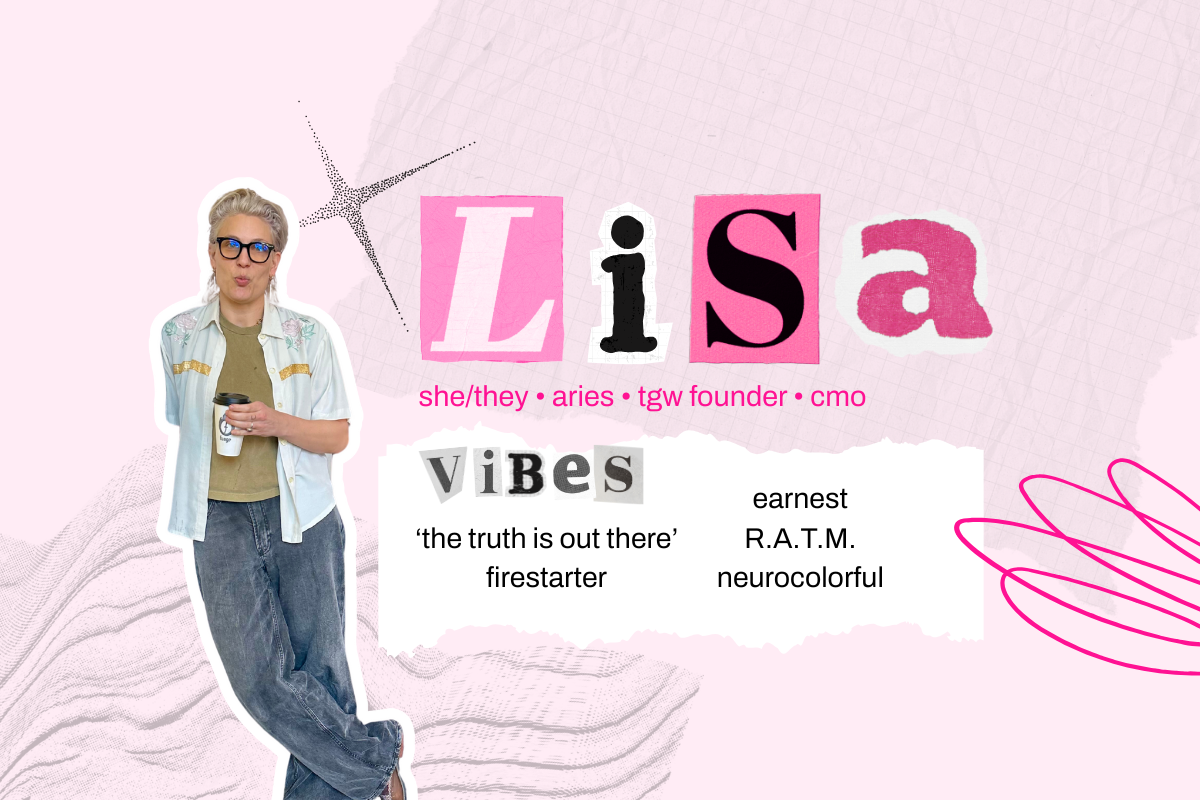Have you been pushed into the generative AI train? Is your brain mush? Help is here if you’re trying to get out at the nearest stop before it crashes and burns our ecosystem.
Good news: not so long ago was a time when we didn’t rely on tools like ChatGPT for our day-to-day lives. If you are looking to reduce your AI footprint, there are many alternatives you can turn to.
We’ve gathered some of the most common use cases we’ve seen organizations and other marketers use generative AI for, and put together recommendations of tools to consider integrating instead.
Real Quick, Let’s Be Real About Generative AI
Few things to set straight:
- Environmental implications: check our post diving into how Generative AI is creating a disastrous impact on our environment and communities in real time (e.g. how an AI prompt uses five times more electricity than a simple web search).
- Generative AI is nothing but a regurgitation of things that already exist. It offers no conclusions or ideas that haven’t already been thought of. Meaning if it’s out there, you’ll be able to find it, with or without ChatGPT.
- AI may be helping you speed up your work, but it’s definitely not improving quality. In fact, research by a team from Purdue University showed that ChatGPT’s answers were incorrect 52% of the time.
Generative AI giants and corporations have tried so hard to normalize the usage of these tools for the sake of efficiency, but we believe that the brains and creative thinking of the people can deliver much better outcomes.
1. When You Can’t Think of Content Ideas
We get it. Sometimes our brains run out of juice. Coming up with fresh content ideas can be challenging, and many end up turning to generative AI for a quick way to brainstorm.
Your Alternative: Answer the Public
AnswerThePublic can help you research and come up with content topics without taking up hours of your time.
It has a similar essence to ChatGPT or Claude.ai. You tell it what topic, brand, or product you are interested in, and it will scan across multiple platforms (from search engines to social media) to give you search insights and content ideas with a much smaller footprint.
This way, you can make educated content decisions, knowing the information you use isn’t misinterpreted by a tool corporations want you to believe is mighty and all-knowing.
2. When You Can’t Figure Out How to Say Something
Let’s be real. If generative AI could come up with anything better than what we as humans can, it wouldn’t steal from us in the first place. Its copy is formulaic and plain boring. And because so many rely on ChatGPT to draft content, it’s also become pretty easy to spot.
Your Alternative: Grammarly
Let your beautiful brain come up with the copy! But if you need assistance with tone adjustment or vocabulary changes, Grammarly can get you there.
It’s a great tool for when you can’t figure out how to word something the right way, or just want to make sure you are grammatically correct to begin with.
Note: Grammarly does have its own generative AI tool. But because it is a vastly less complex model compared to something like ChatGPT, it uses way less electricity and water to operate, so we’ll let it pass.
3. When You Are Struggling With Creative Concepting
A world where creativity is constant. Can you imagine? As much as we wish that were true, some days our creativity flows less than others. Many turn to generative AI tools when they know what they want to achieve, but aren’t sure how to get there.
Your Alternative: Pinterest
Yes, we’re serious. As much as Pinterest is clowned on, it can be a great resource for anything creative. From branding, website design, ad concepts, illustrations, and more, it’s a one-stop shop for solid moodboarding.
Over 10 years young, they consistently iterate and have recently released a feature that allows you to filter out AI-generated images, so that you can make sure you aren’t influenced by some random slop (or using random slop).
If you’re looking for more specific resources, here are a few platforms where you can browse for inspiration (no subscription to access gated content or payment required):
- Web Design: Lapa.ninja
- Branding: Abduzeedo
- UX/UI Interactivity: Godly
- Data Visualization: DataVizProject
4. When You Can’t Keep Track of Meetings & Next Steps
Meetings —or, as many would call them, the bane of our existence —jumping from one to another without time to reflect on the takeaways and next steps. Which is why there’s a lot of reliance on AI notetakers and meeting summaries.
Your Alternative: Fathom
Fathom is a great notetaker that will join your meetings, record them, transcribe them, and provide multiple options for you to highlight important discussion points and action items live, during your calls.
Note: Similarly to Grammarly, it’s important to note that Fathom comes with its own AI features. But because users have the option to turn them off, we’re still considering it a solid alternative for some good, old-fashioned notetaking.
5. When You Need to Make Sense of Data
No one escapes reporting! And when it comes to visualizing trends, a simple Excel file or a Word doc with written metrics won’t always do the trick. You may think that handing off a file to ChatGPT to create a report will smooth the process, but it’s not guaranteed to even accurately understand or represent your data!
Your Alternative: Looker Studio
By connecting tools like Google Analytics, Google Ads, social media channels, and more, Looker Studio funnels your data into a ton of templated reports and dashboards that you can tweak to fit your needs. And it’s completely free as long as you have a Google account!
This way, you won’t have to spend hours creating custom reports from scratch, and can instead focus on interpreting data and working on narratives that your peers and clients will easily understand.
Don’t Let ChatGPT Live Your Life
For many, ChatGPT has become that bad habit they can’t seem to break.
What started as a tool to make our lives easier is not only actively harming our environment and communities, but it’s also continuously robbing us of opportunities to learn and grow.
Is it important to continue finding ways for professionals to feel supported in the workplace? Absolutely. But hampering the ability to learn accurately, explore creativity, and even make mistakes, just leads to soulless, automated work.





